Martin County Courthouse in Williamston, North Carolina
Laurie and I like riding our Gold Wing motorcycle. But it is easy to get into a rut and just ride the same roads. So to force ourselves to ride to places we would not normally visit we made a goal to visit and photograph all 100 North Carolina courthouses within 1 year.
As usual, we got a little behind. We started in July 2015 and finished 99 out of 100 by June 2018. The last courthouse was in our home county of Wake and it took us until Feb 2021 to get that final one. But we made it! This blog is about one of those visits.
Many NC courthouses were added to the National Register of Historic Places in 1979. The nomination form has some interesting facts about the various courthouse styles over the years.
Courthouse Information
Wikipedia says the following about the courthouse:
Martin County Courthouse is a historic courthouse building located at Williamston, Martin County, North Carolina. It was built in 1885, and is two-story, brick, eclectic building with Italianate and Late Victorian style design elements. It has segmental arched windows and a three-story, central square tower. At the rear of the courthouse are two- and three-story jail additions.
It was listed on the National Register of Historic Places in 1979. It is located in the Williamston Commercial Historic District.
County Information
The North Carolina History Project lists the following information for this county:
Annexed from Halifax and Tyrrell Counties during the anxious year of 1774, Martin County was established at the request of weary residents who had traveled long distances to faraway government seats. William Slade, a representative who served in the House of Commons, sponsored several proposals to form a new county in the colony's coastal region during the early 1770s. However, none of Slade's bills were passed during his tenure. Eventually, Martin County was established a few months before the North Carolina Provincial Congress assembled to resist the British government. Although the original charter did not allow for the building of a courthouse, a law was later passed which levied a tax on Martin County residents for the construction of needed municipal buildings.
The county received its name in honor of the last royal governor of North Carolina, Josiah Martin. Even though Josiah Martin angered many North Carolinians, the residents of Martin County kept the name; however, it was from then on used to honor Alexander Martin, a prominent Federalist of the Old North State. Incorporated in 1779, Williamston, the county seat, soon became known as "Tar Landing" because of its important location along the Roanoke River. Throughout the nineteenth century and even into the twentieth century, Williamston served as a transportation center for naval stores such as tar, pitch, turpentine and even forest and meat products. The railroads along with the soon-to-follow highways opened Williamston to even greater trade during the 1900s. Other communities include Oak City, Hamilton, Bear Grass, Everetts, Gold Point, Jamesville, Hassell, Parmele, Darden, and Robersonville.
The first natives in the region were the Tuscarora, who referred to the region as "Squhawky." The Tuscarora lived off the lush forest of present-day Martin County, and they used the Roanoke River as an important trade route with other tribes in the coastal plain region. By the time the first English settlers inhabited the area in the early 1770s, the Tuscarora had migrated to other sites in North Carolina and Virginia.
Martin County's early history has a connection to the Williams family. The seat of government in the county received its name in honor of Colonel William Williams, a Revolutionary War hero, who owned several plantations and estates in the northwestern section of the county. Williams's father, also named William Williams, had settled in the region during early 1700s. He and his family squatted on a track of land on the southern edge of the Roanoke River. William Williams II, colonel of Martin County's militia during the Revolutionary War, served as the county's first senator in the General Assembly in 1777.
The Roanoke River, flowing from Virginia into Warren, Halifax, Northampton, Bertie, and Martin counties, served as a primary trade route during the colony's early years. One of the Southeast's largest rivers, Roanoke, originally called "Moratuck", flooded in 1940, and the surging water swells caused significant damage in Martin County and in surrounding counties. The Roanoke River Basin Association, a group formed in 1945 in an attempt to limit future flood devastation, petitioned the government for construction of Kerr Dam and the Gaston and Smith Mountain Dams. Today, the Roanoke River, along with the various wetlands and swamps in Martin County, provides an ideal location for hunting and fishing for outdoor recreation.
During the Civil War, a Confederate fort, constructed at Rainbow Banks in Martin County, protected the vital transportation route of the Roanoke River. In addition to the river, several railroads crossed over the Roanoke, and the Union Navy targeted these bridges because they supplied General Robert E. Lee's Northern Virginia Army. Confederate North Carolina commissioned the raising of a new fort on a ridge overlooking the Roanoke River valley. Named in honor of General Lawrence O'Bryan Branch who died during the Battle of Antietam, Fort Branch was completed during summer of 1863, and in December of 1864 the Union Army attacked the fort yet failed. As the Confederate Army began to languish in 1865, the soldiers stationed at Fort Branch destroyed the garrison. A private company later renovated Fort Branch, and it presently serves as a historic attraction in Martin County.
Martin County, specifically in Williamston, experienced a breakthrough of desegregation during the Civil Rights Movement. In the mid summer of 1963, civil rights protesters gathered at Green Memorial Church under the auspices of Sarah Small, a Martin County local, and Golden Frinks, an Edenton native who was a good friend of Martin Luther King, Jr. For 32 days over 400 protesters, most adolescents and teenagers, sang, prayed, and rallied to the Martin County Courthouse. Despite counter-protests by the Ku Klux Klan on the outskirts of Williamston, the protests never became violent, and the town council, recognizing the need for desegregation, made steady progress to open public facilities to both whites and African Americans. However, it would take the Civil Rights Act of 1964 to put an end to desegregation throughout the entire nation.
A distinguished North Carolina politician made his home in Williamston, Martin County. Asa Biggs (1811-1878), who served in both Houses of Congress and as a federal judge, learned under his father at the Williamston Academy during the 1820s. While he worked as a manager in Williamston, Briggs read law and in 1831, he was permitted to the North Carolina state bar. The ambitious Briggs entered state politics in the mid-1830s, serving as a Martin County representative during the state's Constitutional Convention. In 1845, the North Carolina legislature appointed Briggs to the House of Representatives where he served until 1847, and he later served in the Senate until 1858. Briggs, never feeling comfortable with the Washington political scene, eagerly anticipated an appointment to a federal district court judgeship. Favoring slavery and secession, Judge Briggs pressed the courts for his support of individual rights, and he would champion the Confederate cause until the fall of the South in 1865.
Our Experience
The old historic building is empty and it is not clear what will happen to the building. There are no monuments at the old building. We saw several very nice monuments around the adjacent new courthouse.

Martin County Courthouse in Williamston, North Carolina

Martin County Courthouse in Williamston, North Carolina
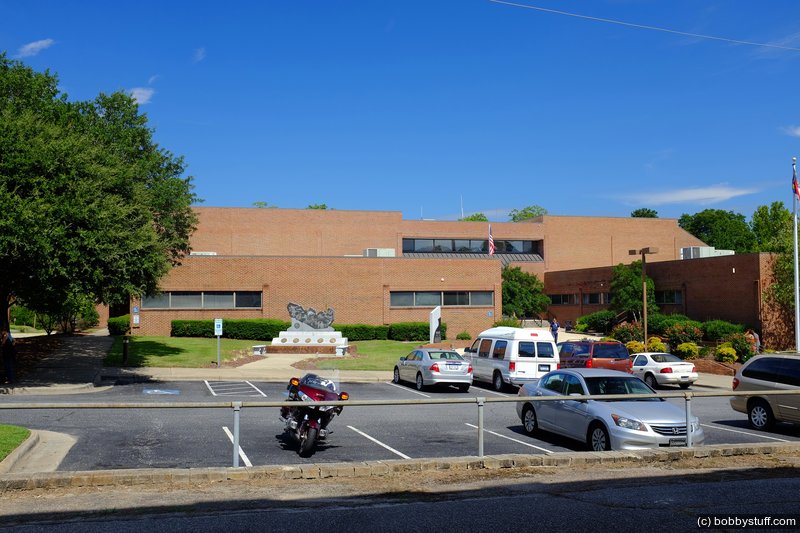
Martin County Courthouse in Williamston, North Carolina
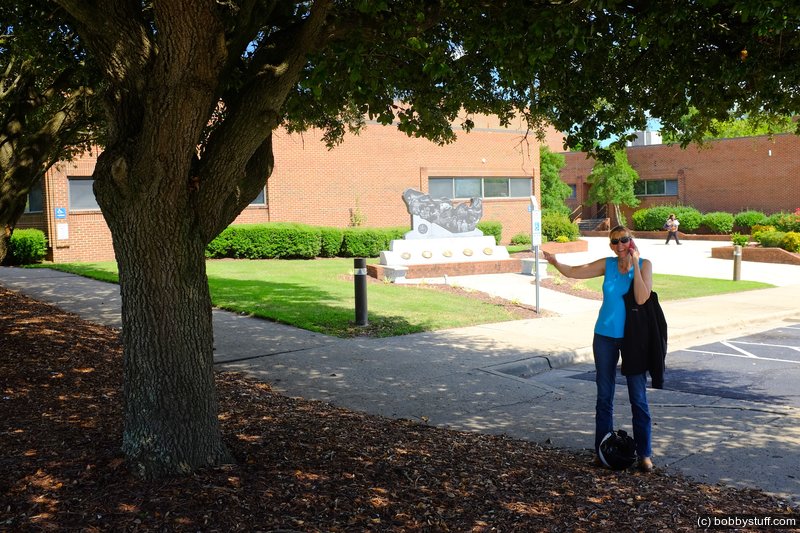
Martin County Courthouse in Williamston, North Carolina
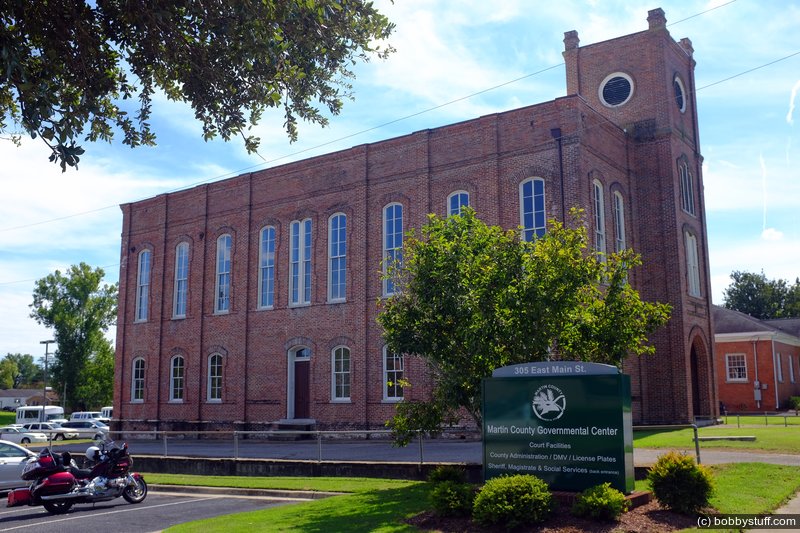
Martin County Courthouse in Williamston, North Carolina
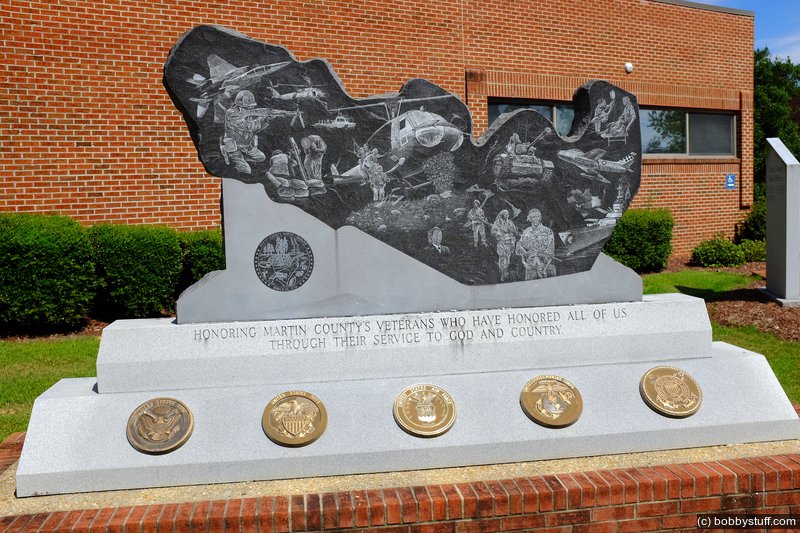
Martin County Courthouse in Williamston, North Carolina

Martin County Courthouse in Williamston, North Carolina
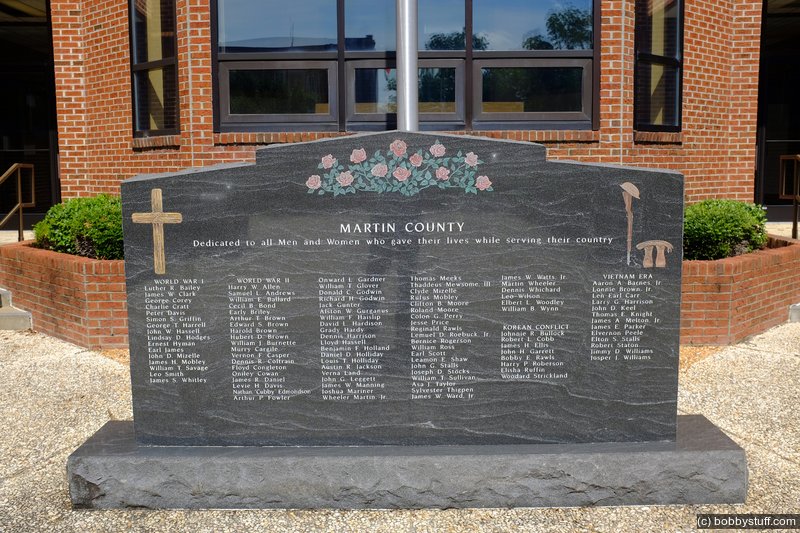
Martin County Courthouse in Williamston, North Carolina
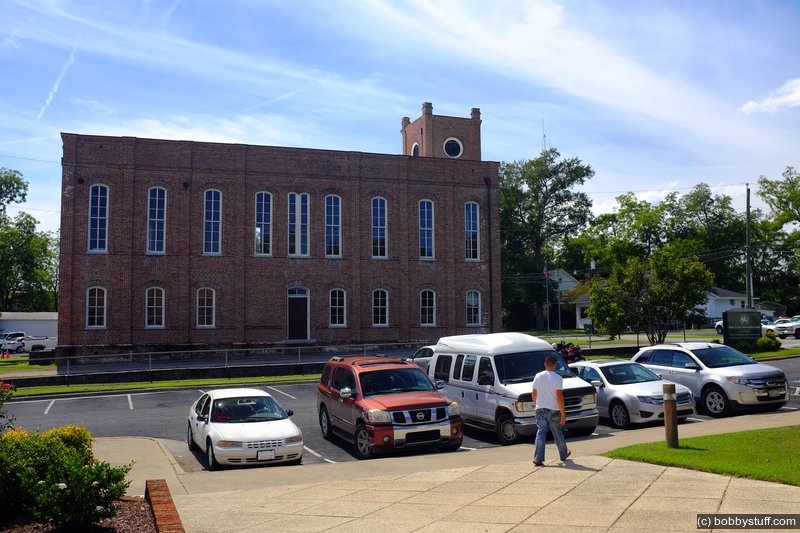
Martin County Courthouse in Williamston, North Carolina
